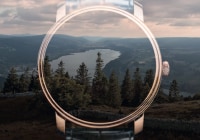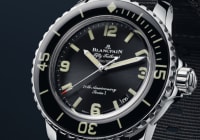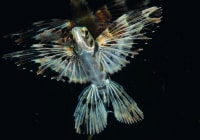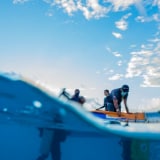
Search in Issues
Chapters
List of parts
Chapter 5
DEEP REEFS of the Far East
The story of a deep-sea scientific quest in one of Indonesia’s most remote archipelagos.

The Maluku Islands. This archipelago with its strange name, once at the centre of the nefarious spice trade and thus greatly coveted by the West, seems today to have fallen partly into oblivion. Yet it was the desire of the countries of the Old Continent to conquer this region that triggered all the great expeditions of the late Middle Ages. Christopher Columbus would not have rediscovered the Americas in 1492 had he not been searching for a new route to reach these mysterious islands replete with distinctive flavours.
The Maluku Islands are now part of Indonesia, a huge archipelagic country in South-East Asia. They are divided into two provinces: North Maluku and South Maluku. This archipelago lies at the heart of what scientists call the Coral Triangle, a mathematical-sounding term that actually refers to a place of vital ecological importance. It is the epicentre of the marine biodiversity that surrounds several countries, namely Indonesia, Malaysia, the Philippines, Papua New Guinea, East Timor and the Solomon Islands, a ‘hotspot’ hosting the greatest quantity and diversity of marine species in the world. More than 600 species of hard corals – almost 80% of the world’s known species to date – provide a habitat for more than 2,000 species of fish along with six of the seven existing marine turtles, all of which are threatened with extinction on a global scale. Teeming with life, this geographical area is essential for many human communities, who still practise traditional subsistence fishing in the most remote regions. There are many man-made threats, however, that are already making themselves felt: tourism and intensive fishing represent considerable financial windfalls, but they are also dangerously undermining the health of marine ecosystems in the short term, especially when the consequences of climate change are added to the mix.
From a scientific point of view, if we compare the Maluku Islands with neighbouring provinces, relatively few studies have been devoted to the archipelago since the 19th-century passage of the English naturalist Alfred Wallace, who was none other than the co-discoverer of the theory of evolution with his much more famous colleague and friend Charles Darwin, in whose shadow he remained. Recent scientific research seems to have focused on the surrounding islands and archipelagos, which are more populated or more popular with tourists: Bali, Sulawesi, Raja Ampat, etc. And yet, the natural wealth within the crystal-clear waters of the Maluku Islands can easily hold its own against its neighbours. Upon his arrival at the port of Banda Neira, an island in South Maluku where the nutmeg trade has flourished for centuries, Alfred Wallace wrote: “Banda is a lovely little spot, its three islands inclosing a secure harbor from whence no outlet is visible, and with water so transparent that living corals and even the minutest objects are plainly seen on the volcanic sand at a depth of seven or eight fathoms.”
Consequently, there are still many scientific mysteries to unravel in this part of the world, particularly in the Banda Sea, located in the southern province of the archipelago, which reaches record depths of over 6,000 metres at certain points. Many marine mammals pass through or live there, including their largest representatives, blue and sperm whales, as well as a range of strange creatures, such as the nautilus. One burning question for those who have done a little research on the subject is whether the famous Indonesian Coelacanth, Latimeria menadoensis, is hiding in the unexplored depths of this vast region. After all, this iconic fish, which represents a pivotal stage in the evolution of terrestrial vertebrates, has been observed further to the west, in Sulawesi, and to the east, in Papua... So there’s no reason why one shouldn’t be allowed to fantasise about a few individuals straying into Malukan waters!

The Api volcano slumbers, presiding proudly over the calm waters of the Banda Islands. (Photo: Bali Drone Production)

A Hawksbill Turtle, Eretmochelys imbricata. A critically endangered species.
Another interesting aspect of this part of Indonesia is that it lies to the east of the Wallace Line, a delineation cutting across the Indonesian archipelago and named after the famous 19th-century naturalist who made the discovery. This imaginary border, which is still relevant today with just a few adjustments, crosses Indonesia from south to north via the Lombok Strait, separating the islands of Bali and Lombok, and then via the Makassar Strait, between the islands of Borneo and Sulawesi. On one side, in the west, there is Asian-type fauna and on the other, in the east, Australian. Wallace’s theory was essentially based on terrestrial observations (invertebrates, birds and mammals) – but what about underwater? Does the segregation that seems to have affected terrestrial animals continue once one dips beneath the crest of the waves?
It is against this exciting backdrop that the Deep Reefs of the Far East expedition was born, supported by Blancpain and led by the French non-profit organisation UNSEEN (‘Underwater Scientific Exploration for Education’) and its Indonesian colleagues from the University of Pattimura in Ambon. The first phase in 2022 focused on the Banda Sea, where technical dives using closed-circuit rebreathers at depths in excess of 100 metres were organised for the first time to document habitats and animals that were as yet unknown. The search for new marine species (fish, sponges and corals), the study of plastic pollution and the unavowed aim of discovering suitable habitats for a new population of coelacanths were the driving forces behind this high-risk human and scientific adventure.
No diver has ever reached such depths in this remote region of Indonesia before. The complexity of setting up expeditions of this kind in such isolated places presents a serious obstacle for many adventurers. Among other things, the essential research permits had to be obtained from the central government, sufficient funds raised, oxygen and helium sourced for the breathing mixes, and a shipment of over two tonnes of equipment organised from Bali and Jakarta to Ambon, the provincial capital. Fortunately, our many years in Indonesia have enabled us to develop a network of sufficiently reliable partners to be able to bounce back from every obstacle encountered, often at the last minute. For example, how do you send 48 cubic metres of helium from Jakarta to Ambon when the captain of the ship on which the eight cylinders were to be loaded suddenly changes his mind and refuses to take them on board, just as they have been delivered to the quayside? How do you urgently retrieve equipment stuck in a container on a ship ready to leave Jakarta that then has to be shipped by Express courier to Ambon, where it should actually have almost arrived already, two weeks before the start of the project? These were just two of the unforeseen circumstances that our small team of enthusiasts had to resolve in a matter of hours in order to successfully complete the project on time. And let’s not forget the spike in oil prices at the start of 2022, which had a major impact on the expedition’s budget... Once these administrative, financial and logistical obstacles had been cleared (and there were many!), we finally set sail on 12 October 2022 for a 30-day mission around the legendary islands of the immense Banda Sea.
After a warm-up dive to a depth of 87 metres off the island of Maulana, just a short distance east of our port of departure, our small schooner set its course for Banda Neira, more than 12 hours away. The night crossing went off without a hitch, and the team seemed to have found their sea legs quickly.
Banda Neira. Such a legendary name. The aura it exudes is in perfect harmony with the resplendent sunrise that floods the island with light in the early hours of the morning, when we arrive at around 6 o’clock. To think that it was from here, for centuries, that boats with holds filled to the brim with nutmeg, so prized by the European aristocracy, set sail. In those days, a bag of the precious cargo stolen by an unscrupulous sailor could buy him a small house complete with a few servants, where he could live out the rest of his days without ever having to work again.
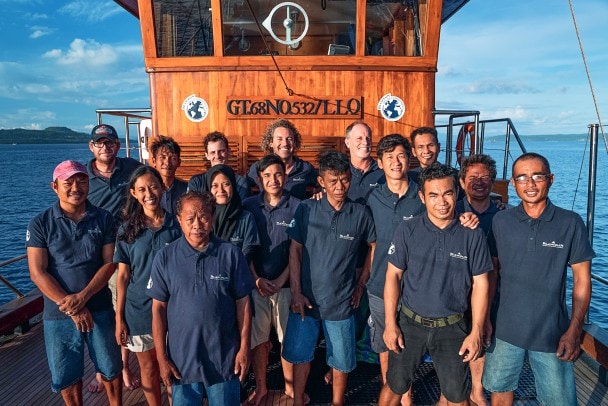
Crew and expedition members worked together for 30 consecutive days, passionately criss-crossing the mysterious Banda Sea. (Photo: Bali Drone Production)
Although our dives are dedicated to the scientific disciplines of biology and ecology, given the history of this place and the centuries of trade that criss-crossed its waters, it was impossible to resist dreaming of stumbling across a wreck of one of these boats chartered by rich Chinese, Arab or, much later on, Western merchants. We would have been happy to temporarily swap biology and ecology for archaeology, a discipline that is just as fascinating! Despite our many deep dives into the waters around these magnificent islands, we found no trace of a 1,000-year-old shipwreck. But this absence was more than made up for by the abundance of life we were lucky enough to encounter during these underwater forays.
For the first week of the expedition, the National Geographic Society lent us the deep-sea camera that their scientists have developed, known as the ‘deep-sea cam’, capable of being left for hours at the intoxicating depth of 3,500 metres. Ocean ecologist and deep-sea specialist Dr Jonatha Giddens was also on hand to share her expertise in deploying this futuristic-looking device, which enabled us to broaden our field of investigation by documenting depths that divers cannot reach. In our case, the camera remained submerged for several hours at a time between depths of 160 and 430 metres, recording everything that passed in front of its lens. Deep-sea sharks, nautiluses and unknown fish testify to the mysteries of life thriving at high pressure. The dark, impenetrable environments in which these animals live act like a cloak of invisibility – a special power that protects them from the human gaze. Equipped with two LED lights and bait to attract deep-sea predators, this camera can glide effortlessly to the ocean floor and snatch a few hours of video, before rising like a cork to the surface once time is up without having to worry about making long decompression stops. It delivers several hours of scientific voyeurism, giving us a better understanding of the species that inhabit this world concealed from the light of the sun. What a surprise it was to see the Indonesian Houndshark, Hemitriakis indroyonoi, pass by at a depth of 300 metres! This species, only described in 2009 from an unfortunate, still immature male who landed on the stall of a fish market in Bali after his life was brutally cut short, is already on the IUCN red list as being in danger of extinction. We probably have the only video to date of an individual filmed in its natural habitat! Next, a magnificent Sharpnose Sevengill Shark, Heptranchias perlo, shared the stage with an enormous moray eel in an impromptu underwater ballet at a depth of 180 metres.
The deep dives continued, and we alternated human and camera dives over a succession of gruelling days.
At 5.30 am on 15th October, we were delighted to welcome a group of early risers made up of local students and researchers, led by the Indonesian NGO Luminocean – co-founded by marine biologist and researcher Dr Mareike Huhn – for a visit aboard our boat, which was then near Banda Neira. We were able to tell them all about our mission and explain the functioning of our closed- circuit rebreathers and the National Geographic’s ‘deep-sea cam’, which we deployed with them that day. What a joy it was to see the wonder in their eyes when we showed them the few images we were able to glean from our first dives in the mesophotic zone at the start of our mission. A sense of wonder tinged with a hint of fear, as the ever-increasing number of tourist boats taking divers to the four corners of the Banda Sea now poses a threat to this hitherto invisible abundance of life and biodiversity with their anchors and chains... An abundance that the local communities know empirically, cherish and exploit, particularly by traditional line fishing from drop-offs. One of the researchers asked us to share some of our photos with him so that he could use them to encourage the local authorities to better protect the region in the face of this new and growing threat, typical of a 21st century focused on leisure activities. Our images suddenly took on a very real dimension.
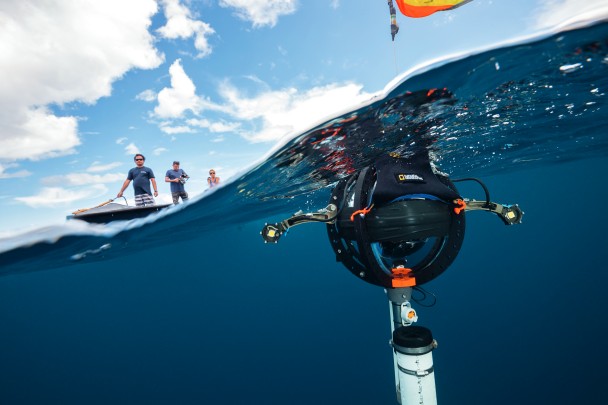
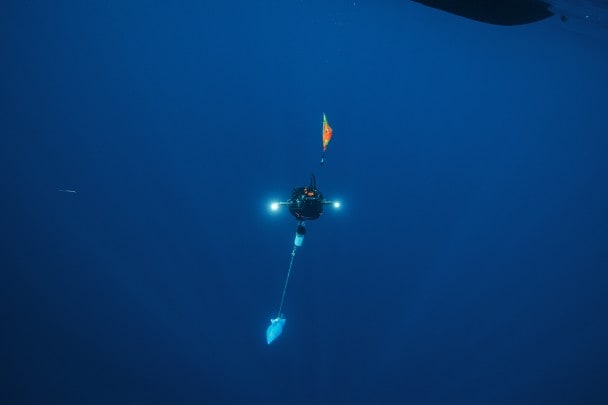
The National Geographic Society’s ‘deep-sea cam’.
Then, a few days later, it was Dr Mark Erdmann’s turn to do us the immense honour of coming on board for three days – a small interlude in his extremely busy schedule. Dr Mark Erdmann is a coral-reef ecologist and Vice-President of Asia-Pacific Programmes for the NGO Conservation International. He has a long history with Indonesia, where he has worked for over 20 years. Incidentally, it was during his doctoral thesis on Sulawesi in 1997 that he and his wife discovered the first Indonesian Coelacanth specimen at a fish market in Manado. The discovery made head- lines at the time, and a few years later, it was confirmed that the species was indeed different from the one found in the Comoros, Latimeria chalumnae. Our discussions were rich and intense, and we had the pleasure over lively dinners of listening to some of his fascinating anecdotes about the incredible events that have marked the career of the man responsible for describing so many species of fish in the Indo-Pacific.
By this time, the team had already settled into its rhythm, and one day followed another aboard the diving schooner. By now, the protocols were well established. The technical divers descended tirelessly, day after day, along the sometimes- vertiginous drop-offs of coral islands or still active volcanoes, collecting water and sediment samples to analyse the concentration of microplastics in the deep reefs, collecting pieces of sponges and mesophotic corals to determine their species and, of course, taking high-definition photos and videos to document these sunken worlds.
After this, we reached the most isolated corners of the Banda Sea, which we sailed across from west to east and from north to south. The nautical miles began to add up and our boat gave us access to the wildest parts of this Indonesian province. The ocean-influenced coral islands to the west of the Banda Sea, bathed in crystal-clear waters, contrast with the more earth-influenced islands to the east, with their murkier waters. But the biodiversity there is just as exceptional. The coral reef drop-offs, covered in white sand and limestone rock, stand out from the lava flows of the volcanic islands with their dark rock, which made our deep dives even more disturbing. It’s interesting to observe that after a volcanic eruption, where the haemorrhage of lava wipes out all traces of life along the flow, life eventually returns, even at great depths. Despite the very smooth surfaces of these newly formed volcanic rocks, sponges and corals manage to cling on. These pioneer organisms of vital importance generate a new habitat that provides shelter and food for a whole range of marine animals.
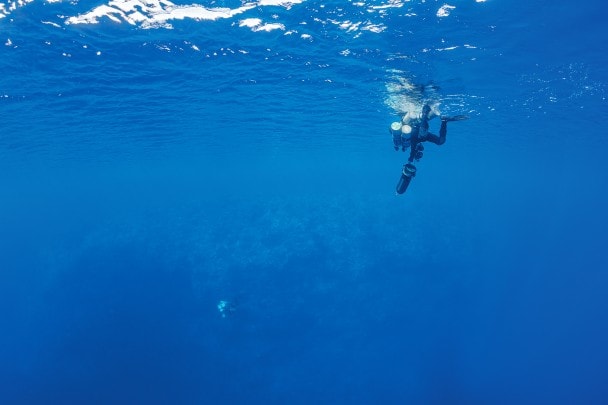
The divers begin their descent.
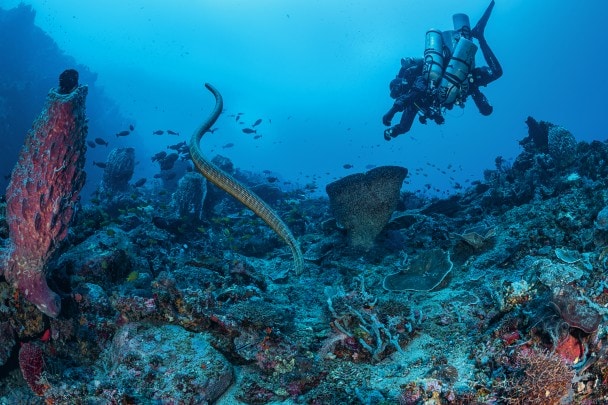
A Chinese Sea Krait, Laticauda semifasciata, rises to the surface for a breath of air.
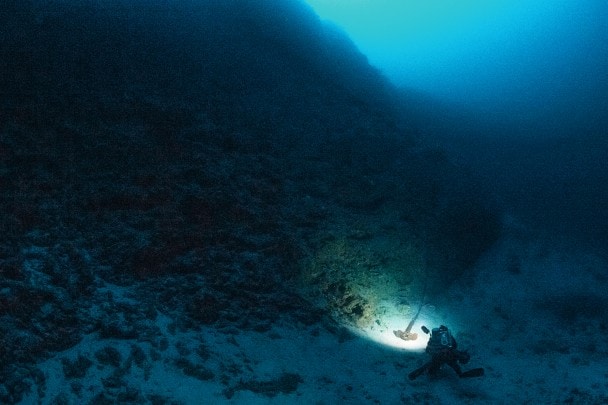
The ship’s anchor dropped in 105 metres of water, along a coral reef drop-off.
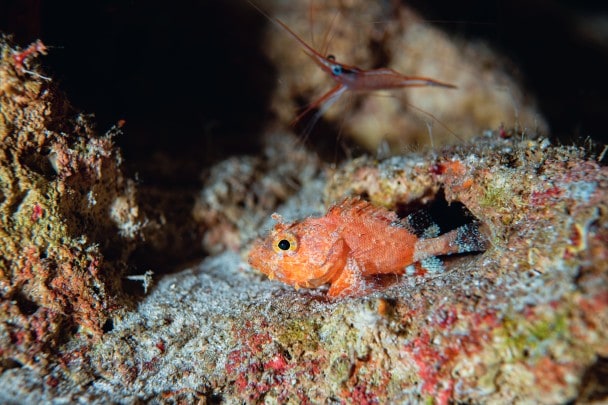
An undetermined species of small scorpionfish, photographed at a depth of 131 metres.
Diving on a lava flow gives you that special feeling of coming face to face with a devastating episode from the past, one that has already been forgiven by the daring animals that come to resettle on this ill-fated spot. These dives bore witness to the resilience of wildlife, of its constant determination to regain the upper hand after a catastrophe that has claimed so many souls. These exceptional events, albeit brief on a geological scale, help to shape our oceans and the life that thrives in them. A dive on a coral reef drop-off offers a completely different impression that is no less exceptional.
As the celebrated aquanaut-explorer and underwater photographer Laurent Ballesta rightly declared, “descending into the depths is like going back in time”. The meaning of this suddenly becomes crystal clear in this specific context: the seabed that unfurled before our eyes as we descended was our chronological timeline.
Forgotten at a depth of 100 to 130 metres, the mesophotic reef found here was very often a coral reef close to the surface, or even completely above water, nearly 20,000 years ago, during the Last Glacial Maximum.
Did certain species manage to cling to this living environment to which they had become accustomed over thousands of years, gradually sinking to the depths as the ice slowly melted and the sea level rose, gently disappearing into oblivion as the light faded? How else can we explain the shimmering, completely surreal colours of certain fish, even though they live in almost total darkness, where all the wavelengths of the visible light spectrum are absorbed? We mustn’t forget that water is the sworn enemy of light, which it reflects and absorbs the deeper one sinks.
We can understand why some deep-sea species are dressed in shades of red, like this pygmy scorpionfish resting at a depth of 130 metres, when we consider that red is the first wavelength to disappear, just a few centimetres below the surface. At great depths, it is thus an ideal camouflage for protection against predators, and for ambushing and gobbling up any unwary prey that ventures too close. But why go to all the trouble of developing other colours, patterns and shapes where darkness dominates? This incredible anthias with its long third dorsal-fin spine, Odontanthias sp., a species as yet undescribed and photographed at a depth of almost 140 metres, sums up this paradox perfectly. Why spend energy putting together such incredible colours and morphological features if none of your fellow creatures can admire them in the realm of permanent darkness? And this Goldribbon Soapfish, Aulacocephalus temminckii, immortalised at a depth of 122 metres, whose make-up is reminiscent of certain sports cars... Could it be that these colours, revealed by camera flashes and divers’ lights, are the ancestral treasures testifying to a life that was once closer to the surface, where the multicoloured pigments of ancestors actually had a role to play?
The PERMANENT DARKNESS doesn’t discourage the EXTRAVAGANT COLOURS and shapes proudly displayed by some fish.
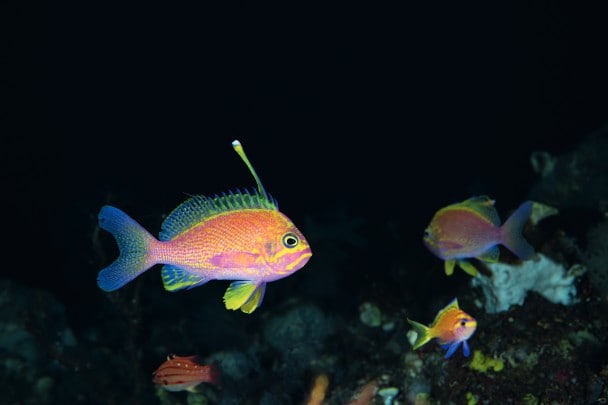
A breathtaking anthias with an unusual dorsal fin, Odontanthias sp., photographed here at a depth of 134 metres.
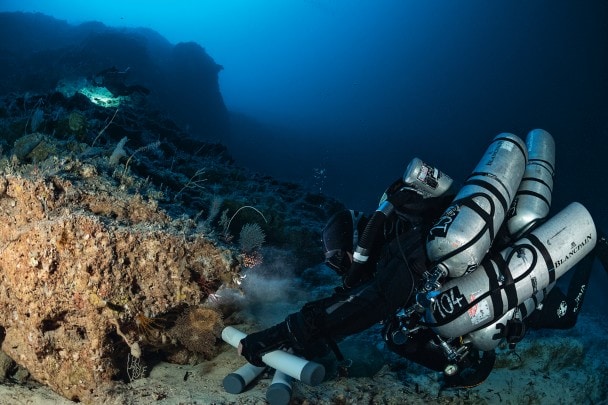
Marc Crane taking water samples at 131 metres below sea level.
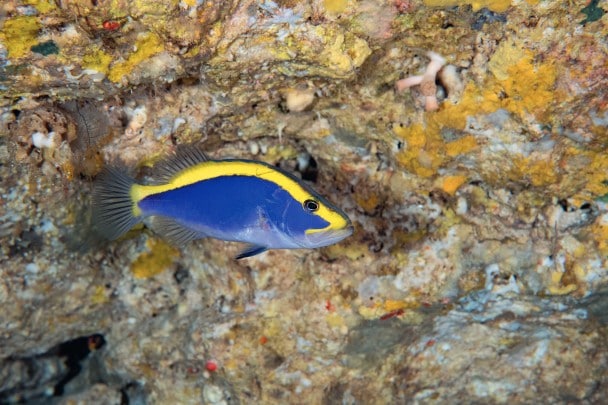
A Goldribbon Soapfish, Aulacocephalus temminckii, spotted at a depth of 122 metres.
Time takes on a different meaning at such depths. EVERY SECOND IS PRECIOUS.
To date, these are only personal hypotheses, but the long hours of decompression that follow an incursion into this twilight world give us time to ponder on the strange creatures that we have just encountered and the reason why they are still wearing multi- coloured evening gowns, when the lights on the dance floor went out long ago. While you’re allowed to think during the decompression stops, you can’t at a depth of 140 metres. Time is always running out. Every second is precious. We have to methodically collect the samples that the scientists need on the surface and take the photographs that are essential for documenting these deep reefs and their inhabitants. Each task seems to take forever, because we don’t place the same value on time at such depths as we do on the surface. We are only allowed to stay for ten to 15 minutes at most. Imagine a wildlife photographer going into the forest for just a handful of minutes a day to try and immortalise rare, sometimes even unknown and almost always stealthy animals, before spending several hours returning home. Now, add the constraints of operating in an aquatic environment equipped with heavy, cumbersome gear whose hydrodynamics and manoeuvrability are more akin to an overflowing super- market trolley than a streamlined dolphin, and imagine being thus kitted out when chasing after species with optimal fuselage and relentless aquatic agility and which, to make matters worse, know the place like the back of their fins! And then there are the peculiarities of underwater photography, which the half-light makes even more complex: you have to find your subject, manage to approach it as discreetly as possible, focus the camera while controlling your buoyancy, and finally click the shutter to immortalise your subject before it disappears into a crevasse, never to emerge again.
The seconds ticking away on this scientific and photographic quest were painful, and we were often overcome with frustration when we missed a photograph of a rare species. Each image captured in these mesophotic zones is special and valuable to the person who took it, and the general public is often unaware of this.
We pay dearly in decompression time for the precious minutes we spend exploring this world that is so hostile to man: three to five hours, depending on our degree of impudence, during which we are formally forbidden to leave, on pain of a saturation accident that would be fatal in the case of such deep dives. So we have to wait long hours before surfacing. Any problem that may arise underwater must be solved underwater. That’s why we leave so heavily laden with around 80 kilos of equipment, a good proportion of which is emergency cylinders in case our rebreather stops working properly. Like guardian angels, the surface team watch over us from our little dinghy and come to meet us to make sure that everything’s fine when we’re on the decompression stop. They use the opportunity to relieve us of any equipment we no longer need and the precious samples that will be stored on board to be analysed once we’re back on land.
The constant show that unfolded before our eyes throughout the end of each dive was just as impressive, and helped us forget the fatigue and pain we felt in our backs, as well as in our jaws from holding our mouthpieces in our mouths for so long. Trevallies and sea snakes hunting in schools of anthias, a discreet little crab hidden in the coral, a nudibranch looking for its next meal, or this blenny fish that has taken up residence in an old tube that an annelid worm has patiently dug into the coral – life is everywhere. The smallest nooks and crannies of the reef are covered with animals and plants with meticulous and surprising adaptations developed over millions of years of unstoppable evolution. Evolution – that often-misunderstood artist of inexhaustible creativity, who for billions of years has tirelessly and indiscriminately sculpted all the living organisms with whom we share this blue planet – still has many secrets to unveil to satisfy the human curiosity that it has itself created.
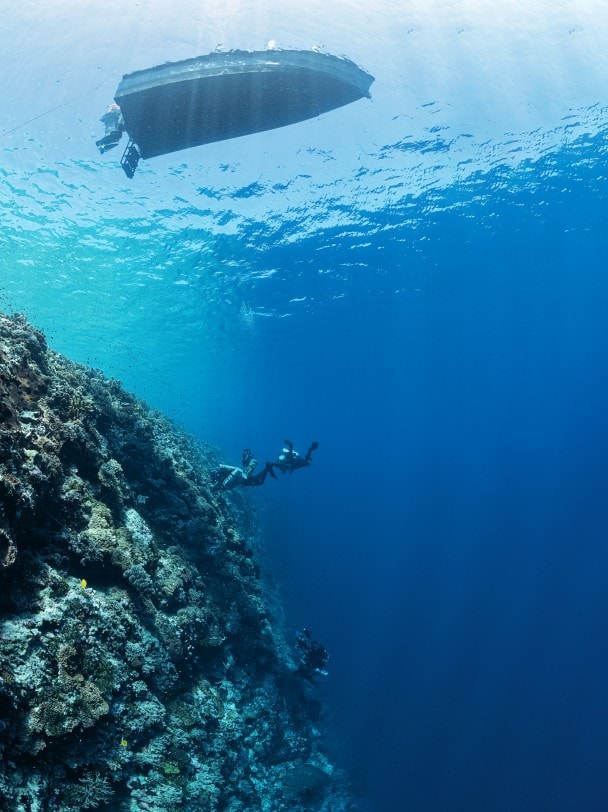
In between these challenging yet breathtaking dives, we even found the energy and nerve to indulge in a few night-time explorations – just a few metres down – to observe the intriguing fauna that emerges from the darkness and swarms in the black waters once the sun has set. Metallic-coloured flying fish displaying immense fins like statues sculpted from precious minerals, annelids gesticulating frantically to propel themselves through the water column and, of course, a host of fish larvae and invertebrates taking part in the greatest daily migration that exists on Earth brought these nights underwater to life. And let’s not forget the sea snakes, dressed in their convict-style outfits, which swim back and forth between the seabed where they feed and the surface where they catch their breath!
What a festival of life! It is impossible to ever tire of such displays unfolding before our astonished eyes. And how can we bear the idea that mankind is plundering the oceans, which cover 70% of our planet’s surface, and using ever more advanced and powerful technology to massacre these abundant and innocent life forms? Has Homo sapiens forgotten that the animals he treats with such disrespect are none other than his distant cousins? How can we still believe in the preposterous idea that marine resources are inexhaustible, and that the ocean will perpetually forgive our affronts by making the excesses of today’s society – motivated by unlimited greed and selfishness – disappear, absorbing and erasing them silently and with no form of compensation? The latest human fad, deep-sea mining, is a perfect illustration of this outdated thinking. Is it still possible today, with all that we know, not to have an even greater desire to defend these grandiose underwater worlds that inspire us, protect us and give us life? Because if life did indeed begin in a primitive ocean four billion years ago, and then developed and diversified there until the first terrestrial organisms emerged, this same life is still possible today thanks to our oceans, which produce the oxygen we breathe and provide us with many other services. Destroying them is tantamount to condemning ourselves. Let’s keep that in the back of our over-developed cortex. We are undeniably the most turbulent and insolent offspring of this primitive broth!
When tiredness and reason finally force us out of the water under a sky sparkling with millions of stars to return to our bunks, we fall asleep, our heads filled with images. But one question remains: what would we have seen if we’d stayed a bit longer?
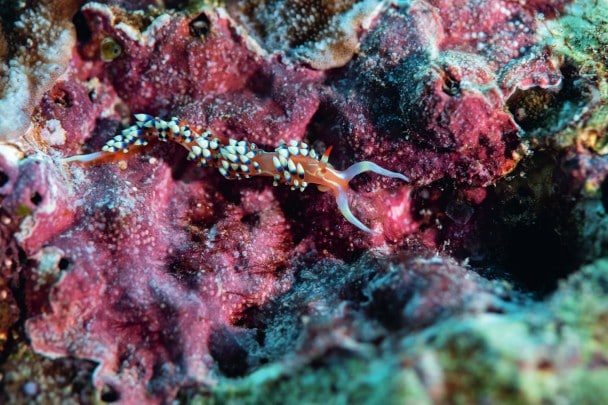
An Indian Caloria, Caloria indica, in search of its next meal.
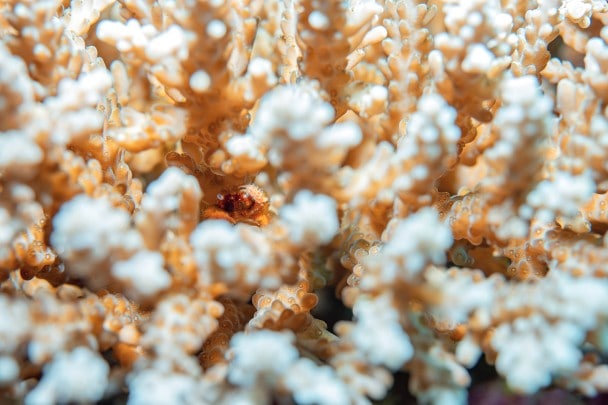
A coral crab, Cymo sp., shelters in a branching coral.
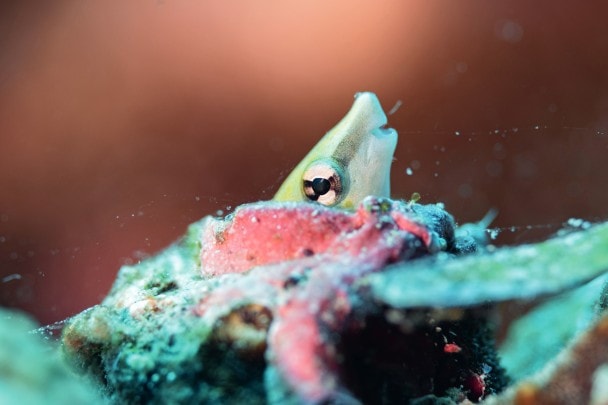
A blenny, belonging to the genus Aspidontus, taking refuge in an abandoned annelid worm tube.
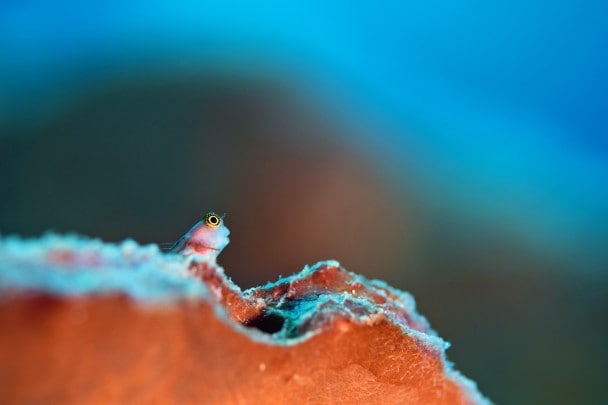
This little Three-Lined Blenny, Ecsenius trilineatus, watches over its territory, perched on its sponge.
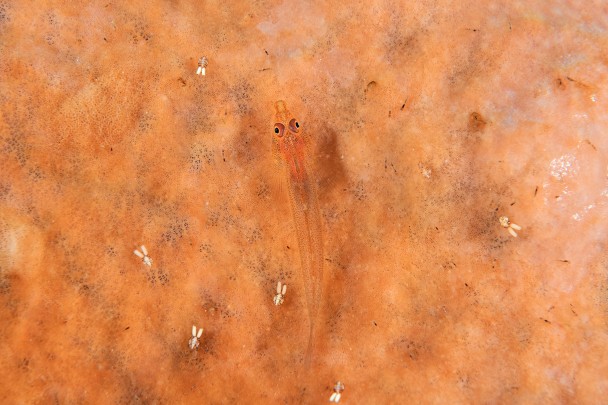
A Wolfsnout Goby, Luposicya lupus, resting on a sponge and surrounded by tiny copepods.
Is it still possible today, with all that we know, not to want to defend these grandiose underwater worlds that INSPIRE US, PROTECT US AND GIVE US LIFE?
During the day, we also explored the shallow submerged slopes of volcanoes that are still active. Enchanting landscapes, despite the extreme violence of the phenomena taking place beneath the oceanic crust. The gases escaping from the rock through fissures, acting like pressure valves, form bubbles that rise to the surface. This natural jacuzzi deposits a layer of sulphur on the surface of the black volcanic sand, as if a film of gold had been delicately sprinkled over it by a creative hand. The bubbles also tear organic matter from the ocean substrate and resuspend it in the water column where a few fish swim by. Some hard corals even seem to cope with this uncertain, potentially acidic environment. Perhaps evolution has given them the solution for adapting to the acidification of the oceans caused by human activity?

A Banded Sea Krait, Laticauda colubrina, having a breather on the surface during a nocturnal hunt.
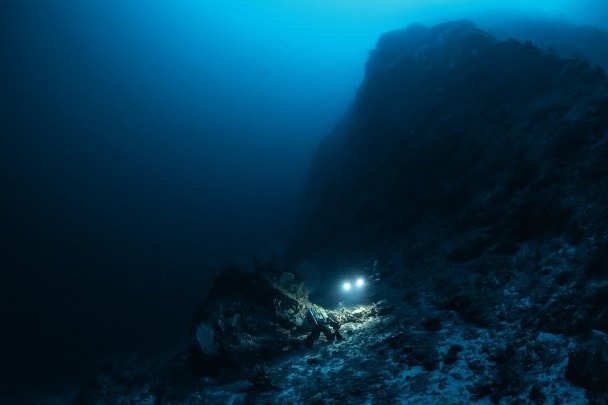
A setting worthy of another planet, at a depth of 137 metres.
In 30 days at sea, we made no fewer than 25 deep dives, 23 of which were deeper than 100 metres, and 13 between depths of 120 and 140 metres. Each of the three deep divers spent between three and more than four days underwater during the monthlong expedition, with dives lasting an average of three and a half hours, including a record dive of five hours and 13 minutes! We brought back thousands of photos, hours of video and around 60 samples that now need to be meticulously analysed in the hope of finding new species. This would encourage greater protection of this region of the world, with its magnificent marine riches. The images will have documented these deep reefs of unsuspected diversity for the first time. Those that have been analysed have already enabled scientists to identify at least 100 species of fish living in the lower mesophotic zone (beyond a depth of 70 metres), including 12 that had never been seen in Indonesia and 37 that set new depth records. We also came back with many questions: what is the lifestyle and social interaction of Hoplolatilus randalli, a species of tilefish described in 2010 of which we observed several dozen nests at a depth of 70 metres at one of the sites?

A Randall’s Tilefish, Hoplolatilus randalli, in front of its nest at a depth of 70 metres.
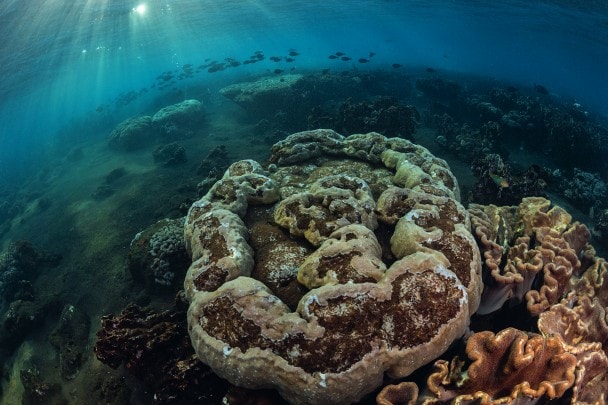
Some corals manage to survive and thrive on the slopes of islands where there are still active volcanoes, despite complex environmental conditions.
Do these LAST WILDERNESS HABITATS, home to a unique and flourishing biodiversity, not DESERVE PROTECTION commensurate with their brazen beauty?
How do these talented architects manage to build nests much larger than themselves using coral debris at depths where these very corals are absent? What is the real impact of diving-boat anchors on these deep-sea environments, where the organisms that develop are certainly slower-growing than those living near the surface? How will climate change affect these mesophotic environments in the years to come, and what consequences will it have for local communities? These are just some of the questions that require a follow-up to this first expedition!
The Indonesian Coelacanth also remains an enigma. The temperature of the water, which was unreasonably high at a depth of more than 100 metres due to an unusual La Niña that lasted for three years, certainly didn’t help. As Mark Erdmann explained: “under such conditions, we would expect that the coelacanths have probably gone deeper”, in search of temperatures below 18°C which they might prefer... But the habitats that are conducive to the presence of this legendary fish are there, and all we can do is persevere and continue our quest in the heart of this still wild and mysterious region.
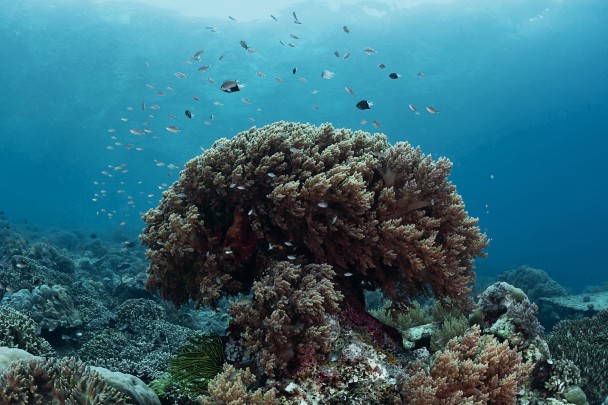
Life abounds in total harmony just a few metres below the surface.
Other issues
Don't miss the latest issue
Sign Up for New Releases

